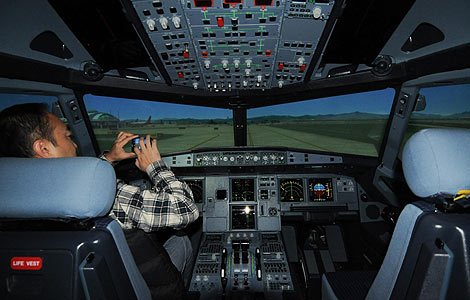
Overseas expansion
Mindray established an office in the US in 2004 and did the same in the United Kingdom two years later. Its network of subsidiaries and representative offices has since been expanded into about 20 countries, including France, Germany, the Netherlands and Spain.
In 2006, Mindray listed itself on the New York Stock Exchange, raising $311 million.
Despite having to compete with international giants such as Philips Healthcare, GE Healthcare and Spacelabs Healthcare, the company has managed to take part in a large number of prominent projects over the years.
One of them has it supplying medical equipment — including patient devices and ultrasound equipment — to Britain's public healthcare system, the National Health Service, or NHS.
"We entered into talks with the NHS around 2006 or 2007, and they had an open attitude about learning about our products," Yin said.
In 2008, Mindray placed a bid to take part in the NHS' procurement system.
"We were assessed as a business holistically, including our product quality, commercial qualifications and after-sales service," he said. "We passed the test and have remained in their procurement system ever since."
Yin said Mindray's chief advantage in Europe isn't the prices it offers, but the quality of its products and after-sales service.
"Most hospitals have a procurement process whereby prices are not made known at first," Yin said.
A hospital, he explained, can arrange a month-long trial period during which a technical assistant and an after-sales assistant teach doctors how to use a device.
"The doctors then rate the equipment," Yin said. "So if six companies enter the first round, only the most highly rated two or three bidders are then given the opportunity to tell the procurement department their product prices.
"That is why we place great emphasis on product quality and innovation," he said. According to the company's website, Mindray reinvests about 10 percent of its annual revenue into research and development and has introduced about eight products to the market in each of the past seven years.
The company now has about 1,550 employees engaged in research and development, a number making up roughly a third of its workforce.
One milestone in Mindray's overseas expansion came with its $200 million acquisition of the New Jersey-based Datascope Corp's patient monitoring business in 2008.
Datascope's R&D centers in Stockholm and in New Jersey became valuable assets. The deal also gave the company a directly employed sales staff in Europe and North America.
Yin said Mindray and Datascope complement each other in Europe.
"Datascope has been in contact with European customers for decades, so they understand customers' needs," he said. "But they couldn't deliver the products needed due to high R&D cost and slow R&D speed.
"Mindray's advantage is the ability to turn R&D results into actual products. For example, if Datascope needs five years to develop a product, Mindray only needs two years to develop the same product."
After the acquisition, Mindray used Datascope's existing connections to arrange visits between its research and development employees in Shenzhen and European clients.
"Datascope's channels function as an introduction through which our R&D team learned more about customer needs," he said.







